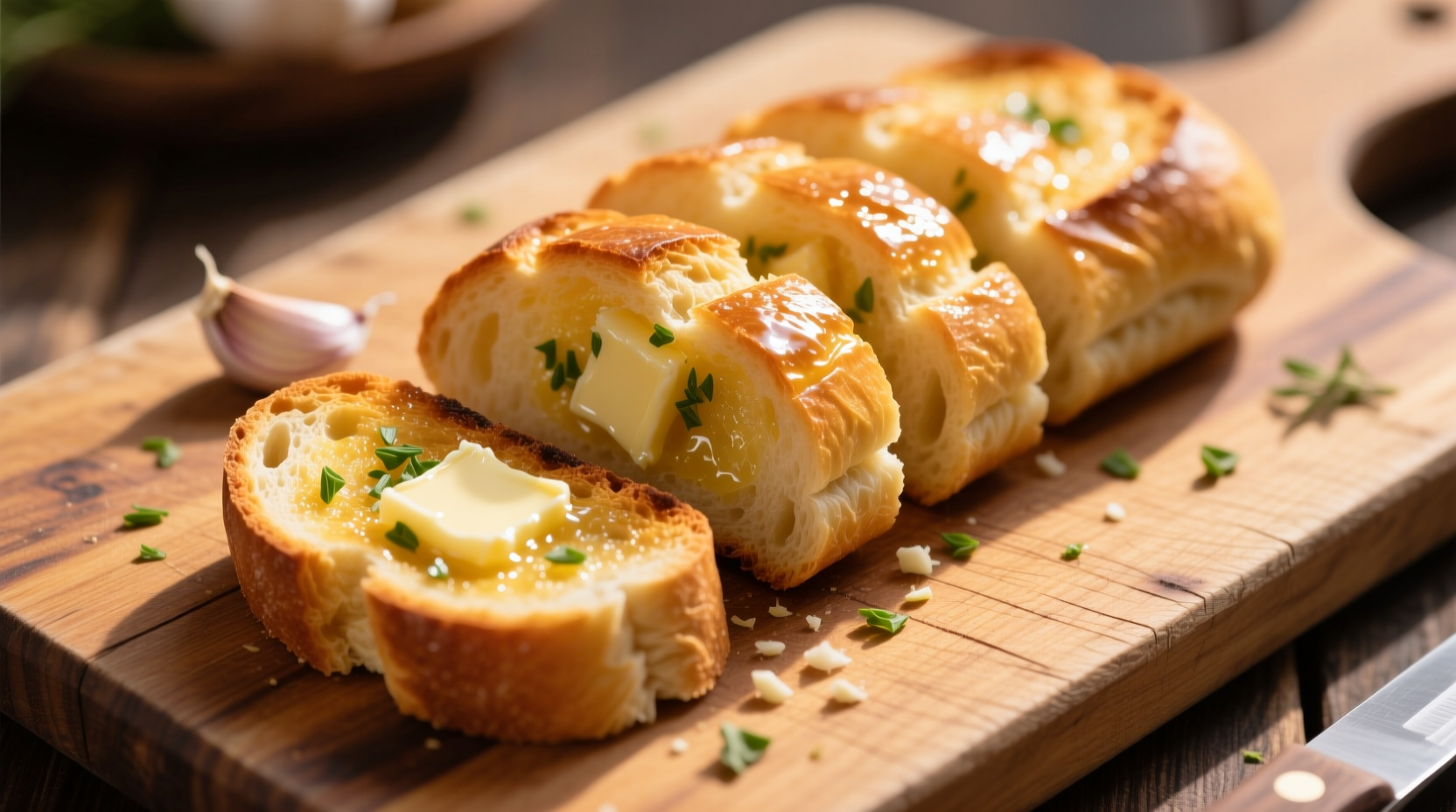The Essential Baguette Selection Guide
Not all baguettes perform equally for garlic bread. For optimal results, choose a day-old baguette with a firm crust and slightly dry interior. Fresh baguettes contain too much moisture, preventing proper crisping. The ideal specimen should sound hollow when tapped and show visible irregular air pockets when sliced.
| Baguette Type | Best For Garlic Bread? | Why |
|---|---|---|
| Day-old traditional | ✓ Yes | Ideal moisture balance for perfect texture |
| Fresh bakery | ✗ No | Too moist, won't crisp properly |
| Pre-sliced supermarket | △ Sometimes | Often too dry, check ingredient list for additives |
Professional Garlic Butter Formula
The secret to exceptional garlic bread lies in the butter preparation. According to culinary science research from The Culinary Institute of America, garlic's flavor compounds activate differently based on preparation method. For balanced flavor without raw bite:
- Use 4 tablespoons unsalted butter per standard baguette
- Mix with 2-3 minced garlic cloves (not garlic powder)
- Add 1 tablespoon fresh parsley, finely chopped
- Include ¼ teaspoon sea salt and a pinch of black pepper
- Optional: 2 tablespoons grated Parmesan for umami depth
Crucially, let the mixture sit for 15 minutes before use. This allows the garlic's allicin compounds to mellow while infusing the butter completely, as documented in Serious Eats' food science research.

Step-by-Step Preparation Process
1. Proper Baguette Slicing Technique
Use a serrated knife to cut diagonal slices about ¾-inch thick, stopping ½-inch from the bottom crust. This " hinge cut" technique ensures the bread stays connected while allowing butter to penetrate. Professional bakers at Paris' Le Cordon Bleu emphasize this method prevents the bread from falling apart during baking while maximizing surface area for flavor absorption.
2. Butter Application Method
Using a pastry brush, generously coat each cut surface with the garlic butter mixture. For restaurant-quality results, insert a small offset spatula between slices to ensure butter reaches the interior. The USDA recommends maintaining butter temperature below 70°F during application to prevent premature melting and uneven distribution.
3. Baking for Optimal Results
Preheat your oven to 375°F (190°C) - the ideal temperature for the Maillard reaction that creates complex flavors in bread. Place the prepared baguette on a wire rack over a baking sheet to ensure even heat circulation. Bake for 12-15 minutes until golden brown. For extra crispness, broil for the final 1-2 minutes while watching carefully.
Troubleshooting Common Issues
Soggy Bottom Problem
If your garlic bread emerges soggy underneath, you've likely used too much butter or baked at too low a temperature. The solution: reduce butter by 25% and increase oven temperature to 400°F. Position the baguette on the middle rack for balanced heat exposure.
Burnt Garlic Syndrome
Bitter, burnt garlic occurs when raw garlic sits directly on bread during high-heat baking. Prevent this by mixing garlic thoroughly with butter first, which creates a protective fat barrier. Alternatively, use roasted garlic for a sweeter, more complex flavor profile that won't burn.
Serving Suggestions and Variations
Serve immediately while hot for the best texture contrast between crispy exterior and soft interior. Pair with tomato-based pasta dishes or as an accompaniment to soups. For creative variations:
- Herb-Infused: Add 1 teaspoon each of fresh thyme and rosemary to the butter
- Cheesy Delight: Sprinkle ¼ cup shredded mozzarella between slices before baking
- Spicy Kick: Mix in ½ teaspoon red pepper flakes for heat lovers
- Garlic Breadsticks: Cut baguette into 4-inch pieces before preparing
Storage and Reheating Tips
Garlic bread is best enjoyed fresh, but leftovers can be stored in an airtight container for up to 2 days. To restore crispness, reheat in a 350°F oven for 5-7 minutes rather than using a microwave, which creates sogginess. Never refrigerate garlic bread, as this accelerates staling through retrogradation of starch molecules.











 浙公网安备
33010002000092号
浙公网安备
33010002000092号 浙B2-20120091-4
浙B2-20120091-4